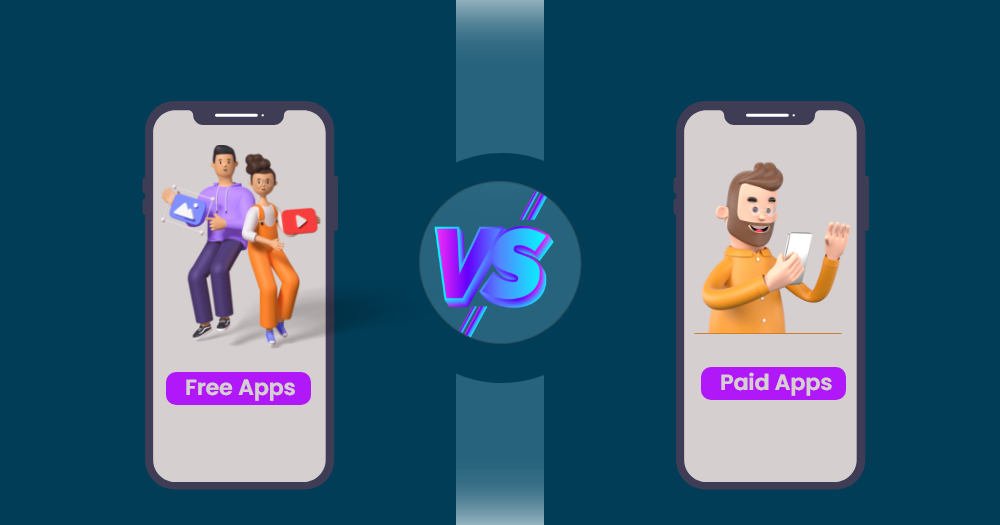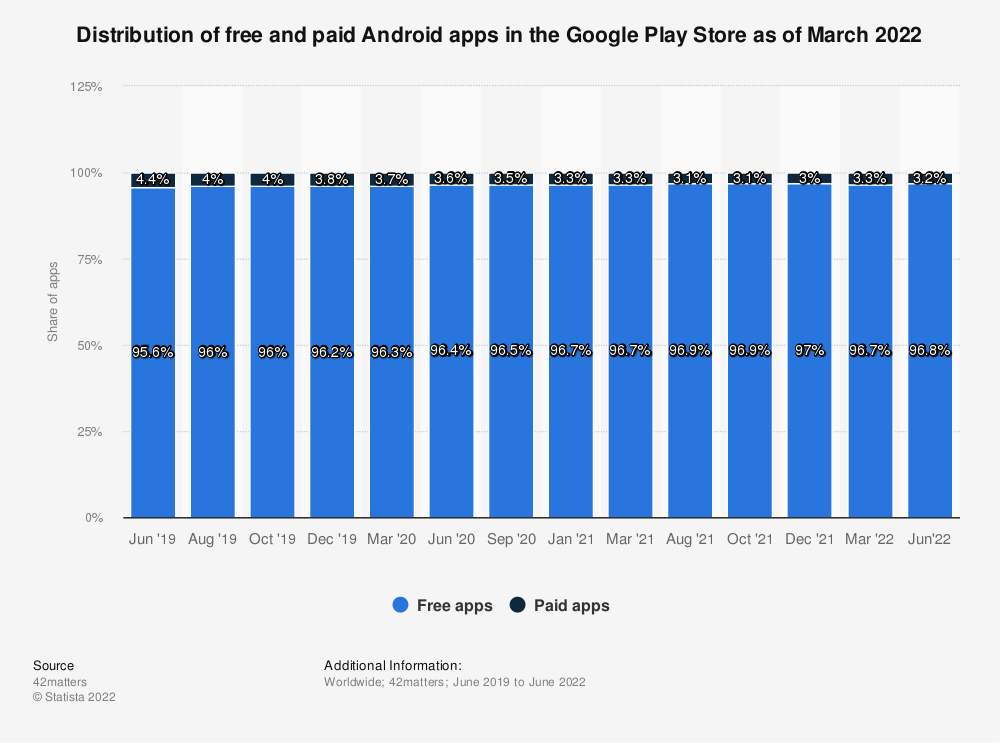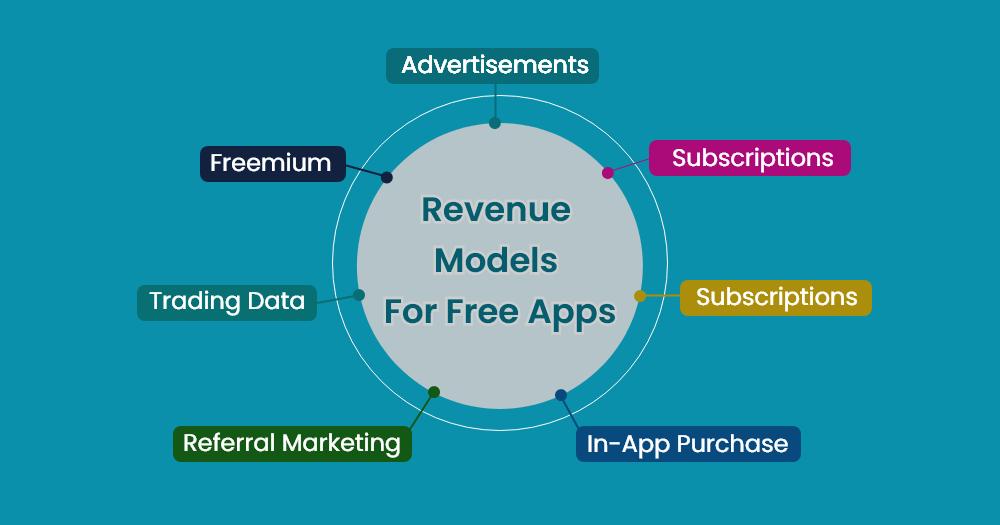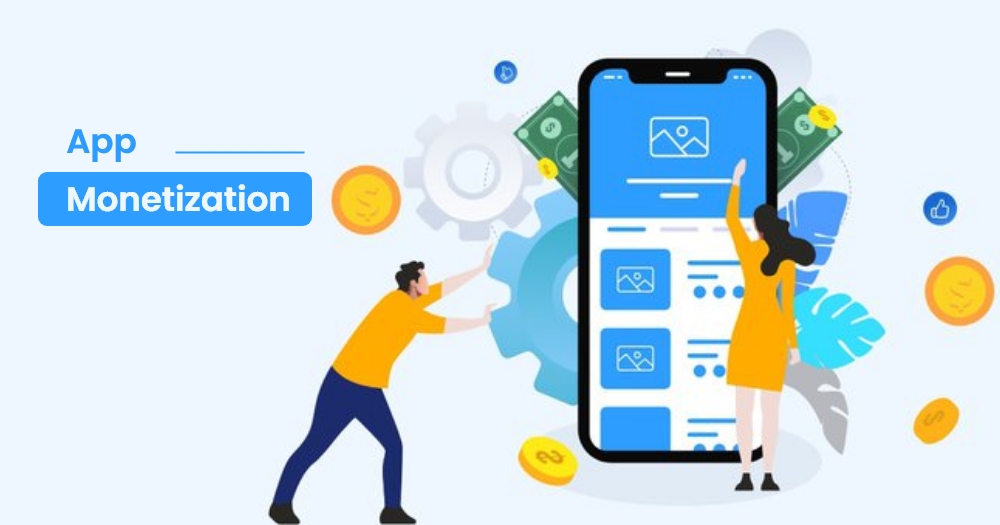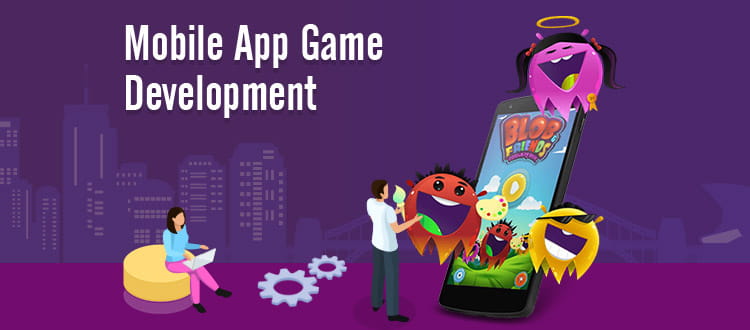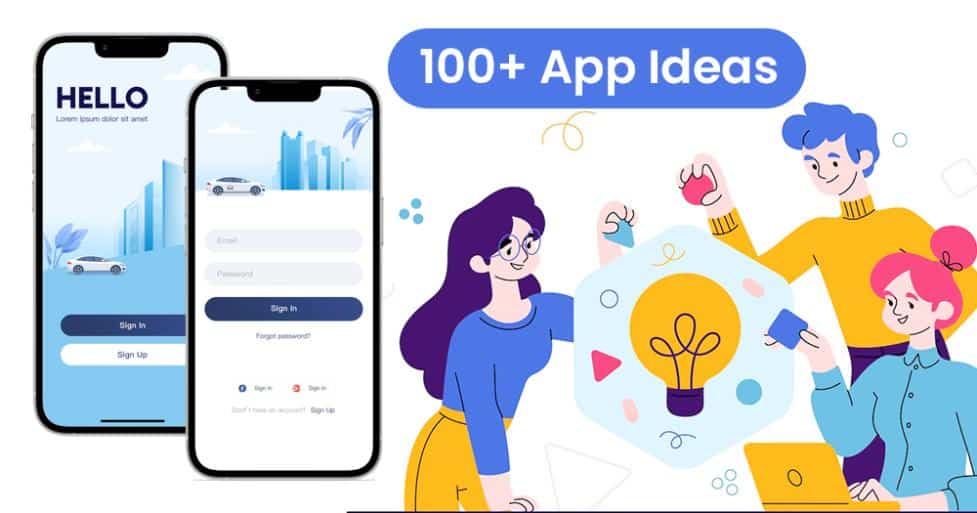The app industry is booming now more than ever. Mobile apps have transformed our lives, making them super easy. Activities that once required manual effort can now be achieved effortlessly. Furthermore, nearly 52% of global internet traffic is due to mobile apps. In this guide, I will teach how can you make money with free apps.
Apps not only contribute to entertainment in our lives but also enhance our quality of life. For instance, all the dedicated apps for our health and wellbeing. These include apps for exercise, meditation, tracking our sleep, ordering medicines, and more. Furthermore, some apps have become so central to our lives that we cannot function without them. For instance, WhatsApp. We use it for both personal and professional purposes.
If you look closely at your Google play store or your Apple app store, you will find two kinds of apps – paid and free. As of March 2022, approximately 97% of the android apps were free for use, whereas the remaining 3% were paid. Furthermore, the number of free apps has surpassed paid apps.
Want to Launch Your Own Mobile App?
Request A Free Quote
While it is obvious how paid apps make money, what about the free apps? How does the developer earn money to make up for all the investments made to develop the app in the first place? You will be surprised to know that free apps account for nearly 98% of the global app revenue. (Source)
So if the question: “How do free apps make money” puzzles you, you are at the right place. In this blog, we will walk you through the following:
- Difference between Free and Paid Apps
- Popular revenue models for free apps
- How to choose the best monetization model for your app
So, let’s begin!
Difference Between Free and Paid Apps
There are many notable differences between a free and a paid app. However, why would you want to release your app as a paid product in the first place? One of the reasons is that you believe your app is so novel that individuals will want to use it despite having to pay for it. And while this may sound attractive, there are some loopholes here.
Free apps, without a doubt, attract a larger audience than paid apps. They have more targeted users, which also increases the number of downloads they experience. In contrast, paid apps typically have fewer clients. Furthermore, you can lose potential users who are not willing to pay for your app product.
Source: Statista
Since users happen to check the ratings and reviews before downloading, the existing reviews are a great way to keep optimizing your app. Furthermore, the users do not usually have high expectations from the app since they get to use it for free. In contrast, paid apps have high user expectations. These apps must run flawlessly without slowing down. Additionally, they must provide the user with all the features since they are paying for the app.
The design and development of free apps are simple, making them cost-effective from the development point of view. In contrast, the development of paid apps is expensive since they must offer a set of features to their users, some of which may be too advanced.
Since free apps do not require an investment on the user’s end, anybody can try them out. If they like it, they will continue to use it and even share them with their friends and family. Paid apps, in contrast, are less likely to be used even if they have great reviews on the Google play store or the Apple app store. Why? Because most of them do not give a free trial.
Lastly, the opportunities to monetize a free app are many. You can apply more than one strategy, whereas paid apps have restrictions. They either charge on a monthly, quarterly, or annual basis.
Popular Revenue Models for Free Apps
Now that you have understood the difference between free and paid apps, let’s see some ways you can monetize a free app.
1. Advertisements
When it comes to how free applications may earn money, running ads is the most popular and straightforward method.
It is quick and easy to use to monetize the software. The owner of the app only needs to display the advertisements within their mobile application to effortlessly get payment from commercial ad networks.
As per reports by Statista, the trends for spending on mobile advertising worldwide show an upward graph from 2007 to 2024. The figures for mobile advertising reach a whopping 288 billion U.S. dollars in 2021, a 26.6% increase from the previous year. Based on this and the recent data, the figure is expected to reach approximately 413 billion by 2024.(Source)
The majority of the time, app owners get compensated when a user clicks or interacts with an ad or when a user installs an app after seeing it in an advertisement. You can get compensated each time an ad is shown, each time a user clicks on the ad or each time they download the promoted app. Since the app is free, you can also conduct advertising campaigns to bring in money for a set amount of time.
You can display 4 kinds of ads for monetizing your app. However, it is also important to track whether the users enjoy it or are opting to block it. This may give you insight into the kind of ads you can run in the future and strengthen the model to generate more revenue. The 4 types are as follows:
1. Interstitial Ads
Interstitial ads are basically pop-ups that cover your entire screen. You can close these ads by clicking on the ‘close’ or ‘X’ button in the top corner. These ads are displayed at certain intervals or after you finish an activity. For instance, when you cross levels in a game or finish editing your photo.
2. Prestitial ads
Prestitial ads, unlike interstitial ads, appear before displaying the content. It impedes the user from accessing the content or performing the activity. YouTube, for example, is an app that uses prestitial ads with interstitial ads.
3. Banners
Banner ads appear either on the top or bottom of the screen. As a user, you may constantly see them on the screen, but these ads do not interrupt your activity or screen view. They are less obstructive and therefore have lesser chances of irritating the users.
Convert Your App Idea into Reality
Request A Free Quote
4. In-app Videos
In-app videos are primarily used as reward videos, especially in games. The user receives a reward, which can help them unlock an item, level, or something similar in the game in return for watching the video.
The benefit of such ads is the high retention rate. Since the ads provide an incentive to the user in the form of tangible tokens they can use in their game, users are likely to watch it till the end.
5. Native Ads
The integration of native advertisements makes them seem like a natural part of the program. The majority of the time, it manifests to advertise a brand or mobile application. In this situation, free user engagement support from affiliate marketing will be provided.
They are substantially less intrusive, reducing the chances of irritation to the users. However, there is a downside. Revenue from native ads is far less compared to other strategies. And although developers consider it the best option, it is one of the widely hated strategies from the user point of view.
2. Subscriptions
The best and most efficient way to monetize an app is through subscriptions. For a limited period, app publishers can distribute free or acceptable material within their applications. After that, they can charge a membership price to allow customers to view the classified and substantial information they have published. This is called the Freemium version. Apps for cloud services, audio and video streaming, and online news services frequently employ this tactic.
The biggest benefit of a subscription model is that it attracts a more attentive and serious audience to use the features. Furthemore, it produces a more stable revenue. Also, Apple Store offers incentives for the app to attract and retain consumers.
However, there are downsides too. You must continually reinvent the features and content to retain the audience. Furthermore, the existing customers may react negatively when a one-time cost is changed to a monthly subscription. You will also have to offer a free trial time so that users can see how the app works and ensure a smooth transition from the free trial to the paid version. Lastly, the parent company needs to be extremely valuable for individuals to renew their subscriptions. For instance, Apple.
3. Merchandise
Many e-commerce companies decide to create applications to sell products like toys, clothing, and other items. For instance, Amazon, Myntra, and Ajio. By leveraging email marketing into practice, they may use the app to sell the items.
Amazon recently unveiled a tool known as Merch, which enables app publishers to market and exhibits their work, encouraging the categories of app publishers to use this monetization method. Furthermore, Amazon has taken care of the delivery and payment to streamline things.
The benefits of such a model are many. Firstly, it allows you to reach out to many people at once at any time and place. Also, it acts like an additional feature where the user can browse through the items. The freedom to sit comfortably at your home and have so many items to choose from ensures that the users do not exit the app with an empty cart.
This model also increases the amount of effort you will need to put in. For instance, ensuring the inventory is correct and updated. Also, you may face software integration issues for payment gateways or anything else.
4. In-App Purchase
The purchases that are made straight from the applications are known as in-app purchases. The usage of in-app purchases allows users to access sophisticated and powerful features that speed up and enhance user engagement. In other words, in-app purchases make it easier for app developers to sell their virtual goods. Popular free game apps like Angry Birds have used this model to enhance user interaction and increase revenue.
There is a considerable possibility that a low-monetization approach will provide huge earnings. This concept works great for gaming applications since they provide several currencies like gems, coins, and gold. The trick is to offer increasingly sophisticated services through your app and to securely store credit card information for in-app purchases.
5. Referral Marketing
Promoting a third-party product or service intending to optimize revenue opportunities is called referral marketing. You can promote or sell affiliate products or services depending on the count of clicks or installations with the help of a pop-up ad. Following are the types of referral marketing models that you can use:
Cost per acquisition (CPA)
Also known as the Cost per action model, in this model, you can promote and advertise via pop-up ads or an in-app store.
Cost per click (CPC)
This model is based on the number of clicks you receive on the ads you display.
Cost per view (CPV)
This model uses the number of ad interactions or the number of views on the videos. You can also use interstitial ads for this kind of referral structure.
Cost per install (CPI)
This revenue from this model depends on the number of app installations of the app you promote on your free app.
Although referral marketing is a trusted way to monetize your free app, tracking a referral campaign is a complex process, necessitating high-end tools and software.
6. Trading Data
Apps generally collect a lot of user data and preferences, which somewhat outlines the user behavior. This data is of prime interest to researchers from different fields, implying that free app producers may profit generously by selling the activity data of their users to these researchers.
Besides selling the data to other researchers, app developers can also use it for their own purpose from the marketing and development point of view. They can analyze the data to create trends and targeted campaigns. You may also use it to introduce new features or fix bugs in your own app
7. Freemium
The most typical app structure utilized by all app developers is called freemium. The solution is really easy. Some elements of a freemium program are only available in the free edition. You must buy the premium version to view the remaining content. For example, youtube leverages a subscription-based freemium model. Once you upgrade to a youtube premium account, you get uninterrupted access to youtube, youtube music, and youtube gaming.
In-app purchases are part of this framework as well. Typically, in-app purchases are an option offered by game producers. As for productivity apps, you need to subscribe to the app’s premium version to easily access the sophisticated features without interruption. Additionally, upgrading to the premium version may obliterate the ads from the interface.
How to Choose the Best Monetization Model for Your App?
A lot goes into building a mobile app, including valuable time and capital. And as a developer, the only thing you want to do after releasing the app is to reap its benefits. You might be interested to know the list of legit money-making apps.
From the audience perspective, no user likes to watch ads back to back or use an app with constant interruptions. The right model will bring you more revenue as well as retain the audience. Keep in the mind the following factors while choosing your monetization model:
Purpose
Understand the objective of your app, and then choose a model. For instance, a subscription model may work well for apps delivering a service or content. However, it may not do so well for a single-purpose or shopping app. For such apps, advertisements may fare well.
Competitive Analysis
Study your competitors and find out their monetization model. See what kind of ads they are sharing or the merchandise they sell. Check if there is a loophole that you can leverage. Furthermore, find if there is a particular feature that they offer that brings them revenue. The more value your app adds to the user’s life, the more likely they are to use it. This is especially true if you want to choose a subscription model.
Audience Preferences
Understand your target audience and their preferences. Study their background and see if they will be willing to pay for your app. You may carry out a simple survey or a poll for the same. Once you know if they are willing to pay, figure out how much. Set your prices accordingly to attract more audience. The willingness to pay also depends on the value your app adds to their life. If they find it valuable, they will be more likely to pay for it because it creates a significant difference in their lives.
Consider your strengths
Do you have a team that excels at advertising or bringing in sponsors? If not, choosing a sponsorship or an advertising model will only do more harm. Similarly, if you have no experience pitching to companies or setting up a commission structure, do not go ahead with a monetization model that needs it. Assess your skills fairly, and choose the one that best matches them.
Don’t leave it for the end: You must select your monetization model before creating an app. It should be a part of the development factors since it involves several factors, including buyer persona.
Conclusion: How Do Free Apps Make Money
There is no doubt that free apps shadow paid ones. The chances of a user using a free app are more than paid ones. And this gives you a profitable opportunity to make revenue. While some of these models are suitable for particular apps, others are more general. However, in an effort to monetize the app, do not forget to take care of the user interest.
The opportunities to monetize a free app and make profits are many. All you need to do is choose the right model. The perfect model will be a middle ground between your interests as a developer and the app user’s interests, taking care of both ends.
The future of the app industry is bright, and so are the business opportunities it presents. With a unique idea, well-developed app, valuable features, and a monetization model, your app can top the charts in no time!
Hire Certified App Developers
Request A Free Quote
FAQs on Make Money with Free Apps
1. What are Freemium apps?
Freemium apps are those apps whose based model is free. You can use the basic features for free. However, you will have to upgrade to a premium plan to use the advanced ones. Freemium apps also include those apps that provide a free trial and then ask you to upgrade to use the app further. Some freemium apps are Spotify, Grammarly, and Youtube.
2. What are some examples of Freemium apps?
Several popular audio streaming apps like Spotify, Zoom and Clash of Clans use a freemium model. In the case of Spotify freemium, once you upgrade, there will be no ads, you can stream tracks at high quality and even download tracks.
3. Can you make money from free apps without using ads?
Yes, absolutely. Running advertisements is just one of the many ways you can monetize your free app. Other ways include in-app purchases, referral marketing, selling merchandise, and subscriptions.
4. What are the benefits of reward videos?
Users are more likely to sit through the entire video because it provides an incentive. They receive free tokens, coupons, or any other item that can be used in the app, especially if it’s a game app to unlock levels and special items.
5. What are some things you should take care of while choosing a model?
Some things that you should take care of while choosing a model are your audience’s preference and background. Furthermore, you must study if your target audience is willing to pay. Finally, also study your competitor’s monetization model. Choose the one that requires the least effort on your end but gets you enough revenue.
Great Together!
![How Do Free Apps Make Money? [7 Revenue Models]](https://theninehertz.com/wp-content/uploads/2022/08/How-Do-Free-Apps-Make-Money-1.png)
